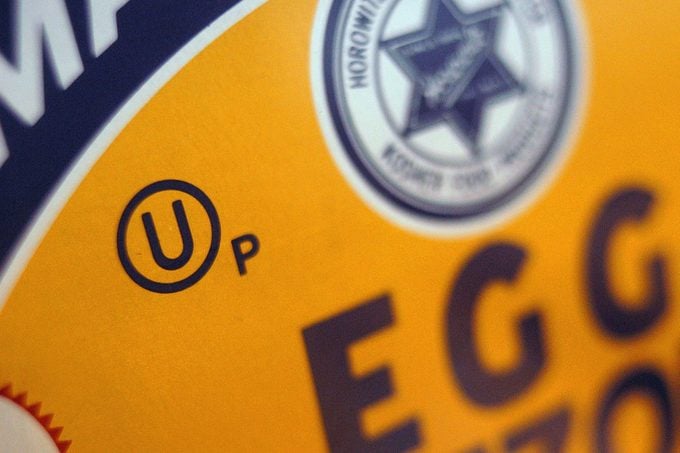There's a difference between "kosher" and "kosher for Passover."

What It Means to Be Kosher for Passover

Growing up, the days before Passover were filled with a special kind of chaos. To prepare for the holiday, there were dishes shuffled from upstairs to downstairs, stockpots of water steaming away on the stove and whole cabinets closed off with masking tape because they contained food that wasn’t kosher for Passover.
It was all part of the annual task of preparing our home and kitchen for Passover. I’ll explain what it means to be kosher for Passover.
What is kosher?
Kosher food is food that adheres to a long and detailed list of dietary rules according to Jewish law. These laws cover specific foods Jews can eat, the kitchens where the food is cooked and stored, and how the food is served and eaten. One of the most well-known rules of keeping kosher is to not mix dairy and meat, but that’s only one small part.
There are categories of animals that are off-limits altogether, like shellfish or animals with split hooves like pigs. There are types of meat, like beef, which can be kosher if they’re raised, slaughtered and served following kosher rules.
In a kosher kitchen, utensils and cookware are kept separate for meat and dairy products. If you’re very strict, you would even have different ovens to cook meat and dairy. Growing up, we had separate cloth napkins for meat and for dairy, and little labels around the kitchen reminding us which utensils went where. But all of it, napkins included, were put aside for Passover, when a whole different level of kosher entered the kitchen.
What is kosher for Passover?
Keeping kosher for Passover is not the same as generally keeping kosher. Passover is a springtime holiday, celebrated around the same time as Easter, commemorating the Jewish exodus from slavery in Egypt. For eight days, we do not eat any chametz—leavened food—including wheat, spelt, barley, oats and rye. Instead we eat matzo, or unleavened bread, which reminds us of our years spent wandering in the desert, unable to stop even to let the bread rise.
In Passover recipes, like matzo ball soup and gefilte fish, matzo meal is often used as a flour replacement There’s also a lot of ground almond flour, which is used to make cakes. It will always remind me of the delicious almond cakes served at the end of our Passover Seder.
Some rules for Passover differ depending on the Passover traditions of your ancestors and where they came from. One of the most debated rules of Passover regards kitniyot, which includes legumes, some seeds, rice and corn. (The restrictions on corn are why there’s a special Coca-Cola formula that’s kosher for Passover.) Traditionally, kitniyot are not eaten by Ashkenazi Jews during Passover, but they are eaten by Sephardic Jews. Then there is quinoa, which somehow snuck through and is considered by most to be kosher for Passover.
How to Kasher a Kitchen

To keep properly kosher for Passover, your kitchen needs to be kashered, or made kosher. There are different ways of doing this depending on your level of observancy. All traces of chametz need to be removed from the house, so it’s a great time to deep-clean the fridge and pantry. All pots, pans and dishware must be switched out for kosher-for-Passover versions, or cleaned in a particular way to be considered kosher for Passover.
There is even a tradition to use a feather to symbolically (but also literally!) wipe away any leftover crumbs of chametz before Passover begins.
What foods are kosher for Passover?
All raw fruits and vegetables are considered kosher for Passover, as are any meat and fish that are already considered kosher. Eggs, nuts and dairy products are also fine to eat. However, any processed food needs to have a kosher for Passover hechsher, or rabbinical endorsement, to be considered kosher for Passover.
What foods are not kosher for Passover?
The list of what is not kosher for Passover is a lot longer. All grains are prohibited besides matzoh, which is allowed because it does not have time to leaven or rise. This includes wheat, spelt, oats and barley. There’s another class of food called kitniyot, which is forbidden for Ashkenazi Jews. These are things like rice, beans and legumes.
Kosher for Passover Symbols

Packaged food that is kosher for Passover has symbols on it to signify the type of kosher certification it has. Depending on your level of observance, you would only eat foods deemed kosher according to your standards and the standards of your community’s Rabbinical council. Often, kosher for Passover is indicated by a “P” next to the usual kosher symbol.
One kosher for Passover symbol is a simple “KP,” meaning kosher for Passover. This is acceptable to many people, but more religious Jews will look for more intricate symbols.
There may be a lot of rules to Passover, but have no fear. It is still a fun and delicious time!




















